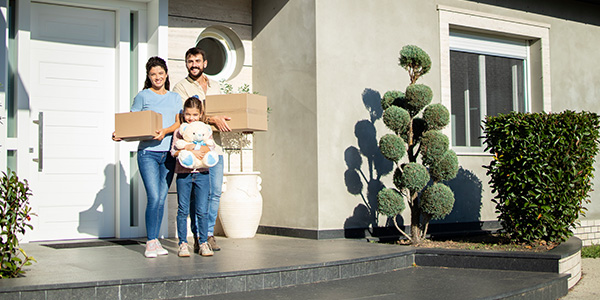Homeowners
Managing the Aftermath: Advice for Homeowners After a Hurricane
October 8, 2024
When the storm passes and the skies clear, the destruction left behind by a hurricane can be devastating.
Hurricane Helene, which made landfall on Sept. 26, caused at least 200 deaths as of Oct. 3, according to news reports. And it wreaked a projected $3 billion to $5 billion in insured property damage, according to real estate data firm CoreLogic.
After the worst has happened, there are steps you can take to mitigate the aftermath. Making sure you and your family are safe, quickly contacting your insurance company to file a claim, and recording the damage to your property can help start your path to recovery.
Hurricanes are among the deadliest and most disastrous natural disasters, according to experts.
Wind damage and flooding are the two biggest causes of property damage from hurricanes. High winds and constant rain can make trees fall, cause local bodies of water to overflow, create flooding and landslides, and destroy homes. Even a few inches of water in a home can be expensive to remedy.
Preparing your home for a hurricane can help offset the risks. However, as climate change continues, the risk from natural disasters is expected to increase.
“These severe events are going to continue to get worse in the coming years,” said Benjamin Collier. He is a professor in the Department of Risk, Actuarial Science, and Legal Studies at Temple University in Philadelphia.
What to do after a hurricane damages your home
The safety of you and your family should be your first priorities after a hurricane. If you are evacuated, do not return to your home to assess the damage or salvage belongings until you are given the all-clear.
If you did not evacuate, and your home seems unstable, your first priority is finding a new place to stay. You’ll want to take any important documents with you provided you can safely get to them.
“If your home is uninhabitable, you need to find a safe place,” said Roger Stotts, chief servicing officer at New American Funding (NAF). “The ‘loss of use’ coverage in a standard homeowners insurance policy often helps pay for lodging.”
Contacting your insurance company
Once you and your family are safe, contacting your homeowners insurance company is important to do—as quickly as possible.
That’s because insurance companies typically work on a first-come, first-served basis. You want to get to the front of that queue and let the insurance company know about the extent of your damage.
An insurance adjuster will visit your property to assess the damage to your property. Then the insurance company will inform you of the size of your payout.
If you have lost your insurance information or are unsure who to contact, you can reach out to your mortgage servicing company. They should be able to provide you with a copy of your homeowners insurance policy and contact information.
Even if you already have your homeowners insurance information, you will still need to reach out to your lender as well.
“Be in communication with both us and the insurance company,” said Stotts. “We're going to make sure that they [the borrower] understand everything that they need to get their money.”
Documenting damage and making repairs

You also want to keep a running list of all of the items that have been damaged. Make sure to photograph and document in detail anything that’s been destroyed or affected by the storm before you start moving anything or making repairs.
It’s tempting to start cleaning up and making repairs immediately, but if you’re filing a claim, the insurance adjustor will need to see everything first-hand.
You can make emergency repairs, like covering broken windows with plastic or putting tarps on a damaged roof to keep rain from causing more water damage.
However, you shouldn’t make any permanent repairs until your insurance company has reviewed the damage.
Managing your mortgage after a disaster
Even after a natural disaster, homeowners are still required to pay their monthly mortgage payments.
“You are expected to continue make mortgage payments during the rebuild or the repair, unless you tell us there's a problem,” said Stotts.
There may be options available from your lender if you are having trouble making your payments.
If your home is completely destroyed and you would rather move than rebuild, you could file an insurance claim. If the payout is large enough you could pay off the rest of your mortgage. Any extra money would be your equity and that would be yours to keep.
Finding financial aid after a natural disaster
In addition to your homeowners insurance, you may also be eligible for Federal Disaster Aid and other types of assistance.
There may also be resources that are unique to your state, such as state programs or help from non-profit organizations.
If you are a NAF customer and your home has been affected by a natural disaster, please contact our Customer Care team at 800-893-5304 and we can help.






 Smart Moves Start Here.
Smart Moves Start Here.